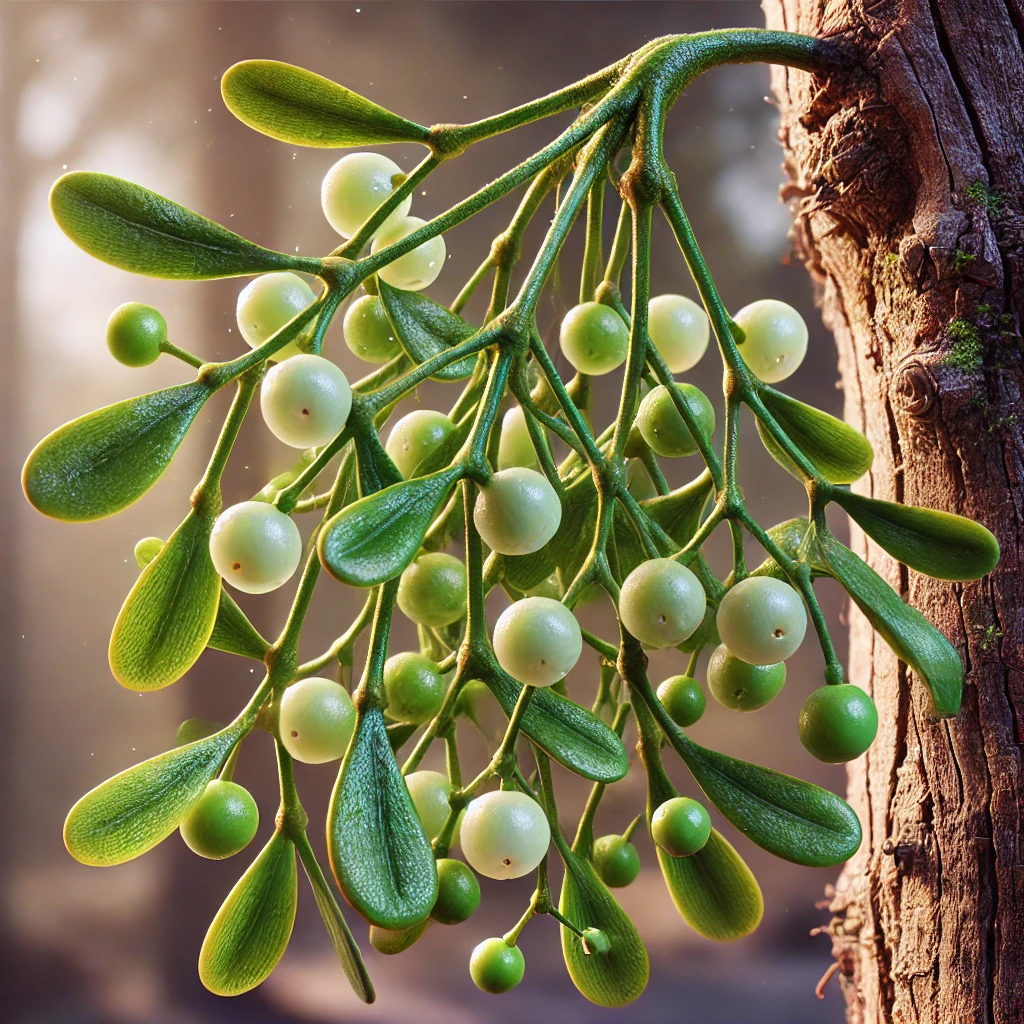LORANTHACEAE FAMILY
Green plants that parasitize the branches of woody plants. The flowers have simple perianths, and the ovary is inferior and unilocular. The fruit is berry-like.
In various species of the Loranthaceae family, significant amounts of tannins, flavonoids, amines, and skin-irritating substances have been found.
Viscum album is a perennial, bushy, spherical, green parasitic plant that inhabits various trees. It is glabrous with woody branches.
The roots of the parasite penetrate under the bark of tree branches and then form suckers deep into the wood. The stems are numerous, forked, woody, and form a nearly spherical bush. The branches are swollen at the nodes, yellow-green. The leaves are thick, leathery, evergreen, elongated with a blunt apex, entire-edged, with 5 parallel veins, dark green, sessile, and opposite. The plant is dioecious. The flowers are inconspicuous, unisexual, and grow in groups of 5–6 at the branch forks. The berry is spherical, white, one-seeded, sticky inside, containing rubber. The seeds are dispersed by birds.

Mistletoe settles on oaks, fruit trees, and other broad-leaved trees. A variety also grows on conifers (fir, pine). It is found in the central part of the European part of Russia, in Crimea, and the Caucasus. In the Far East, Primorye region, a variety of mistletoe called Viscum coloratum (Korn.) Nakai, with yellow and orange berries, grows.
The leaves of mistletoe—Folium Visci—or young branches with leaves—Stipites Visci cum foliis—are collected in late autumn (November-December), during the fruit drop.
The chemical composition has not yet been fully clarified. Choline derivatives (propionylcholine and acetylcholine) have been found; their content depends on the host tree on which the mistletoe has grown. In addition, it contains resin, triterpenoid saponins (oleic and ursolic acids), vitamin C, carotene, viscotoxin 0.05–0.1% (a mixture of amino acids), vicerin, viscol, and others.
Mistletoe preparations experimentally lower blood pressure. The hypotension caused by mistletoe is likely due to a decrease in the excitability of the vasomotor center. An infusion of fresh mistletoe leaves is included in the composition of the drug «Akofit», which is used for acute radiculitis.

